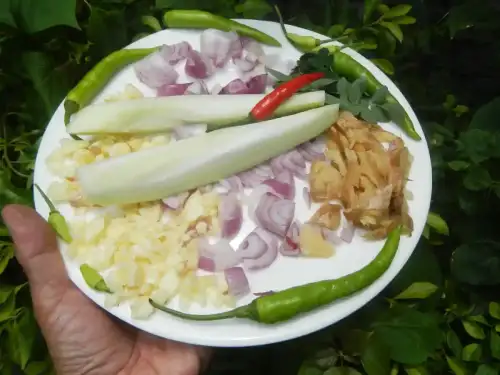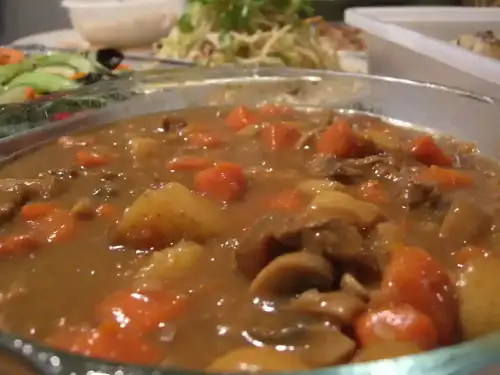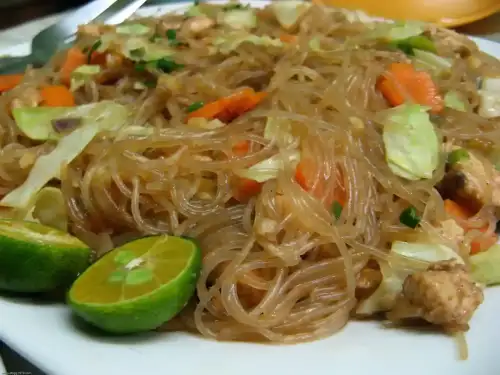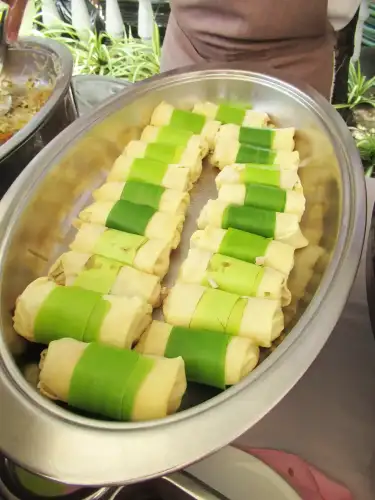Celiac.com 06/13/2025 - Tinolang Manok is a treasured staple in many Filipino households, known for its soul-warming simplicity and nourishing properties. Dating back to pre-colonial times, this ginger-infused chicken soup has long been enjoyed as a comforting dish, often served to the sick, the elderly, or nursing mothers due to its gentle flavor and revitalizing ingredients. Traditionally, Tinola was made with native chicken, green papaya, and chili leaves, simmered together in a light broth seasoned with ginger, garlic, and fish sauce. It reflects the Filipino approach to cooking: using local, fresh ingredients and infusing them with flavor through slow simmering rather than heavy spices.
Today, Tinolang Manok remains a cornerstone of Filipino cuisine, adapted to suit modern palates and available ingredients. It is naturally gluten-free when prepared with homemade broth and verified gluten-free condiments, making it a safe and hearty choice for individuals with celiac disease or gluten sensitivity. This recipe offers a deeply satisfying experience—light yet flavorful, rustic yet refined.
Gluten-Free Tinolang Manok (Ginger-Chicken Soup)
Celiac.com Sponsor (A12):
Servings: 4–6
Prep Time: 15 minutes
Cook Time: 45 minutes
Total Time: 1 hour
Ingredients:
- 2 tablespoons neutral oil (coconut or avocado oil)
- 1 medium onion, sliced
- 5 cloves garlic, minced
- 2 tablespoons fresh ginger, julienned or sliced thinly
- 1 whole bone-in chicken (about 3 lbs), cut into serving pieces
- 6 cups homemade chicken broth or gluten-free verified stock
- 2 tablespoons gluten-free fish sauce (or to taste)
- 1 medium green papaya, peeled, deseeded, and sliced into wedges (or substitute chayote)
- 2 cups chili leaves (or substitute spinach or malunggay leaves)
- 1 teaspoon freshly cracked black pepper
- Salt, to taste
- Optional: 1 long green chili (siling haba), whole
Instructions:
- Sauté aromatics: Heat oil in a large pot over medium heat. Add onions and cook until translucent, about 2–3 minutes. Add garlic and ginger, and sauté for another 2 minutes until fragrant.
- Brown the chicken: Add the chicken pieces to the pot. Cook for 5–7 minutes, turning occasionally, until lightly browned on the outside. This helps seal in the flavor.
- Simmer the broth: Pour in the chicken broth and add the fish sauce. Bring to a boil, then reduce to a gentle simmer. Cover and cook for 30 minutes or until the chicken is fully cooked and tender.
- Add the vegetables: Add green papaya (or chayote) slices and simmer for another 10–12 minutes, or until tender. If using, drop in the long green chili at this stage for a subtle spice.
- Finish with greens: Stir in the chili leaves (or spinach) and cook just until wilted, about 1–2 minutes. Season with salt and pepper to taste.
- Serve: Ladle hot soup into bowls, making sure each serving gets a good mix of chicken, papaya, and greens. Enjoy with steamed rice if desired.
Conclusion:
Tinolang Manok is more than just a meal—it’s a gesture of care, tradition, and healing. This naturally gluten-free version stays true to its roots while ensuring safety for those on restricted diets. Whether you’re fighting off a cold, feeding your family, or just craving something light and nourishing, this ginger-chicken soup will offer warmth, comfort, and a taste of Filipino heritage in every spoonful.









Recommended Comments
There are no comments to display.
Create an account or sign in to comment
You need to be a member in order to leave a comment
Create an account
Sign up for a new account in our community. It's easy!
Register a new accountSign in
Already have an account? Sign in here.
Sign In Now